 |
| The Hoover Dam straddles the Nevada-Arizona border |
Times and Las Vegas have certainly changed, but we
haven’t. While we are still not gamblers,
we’ve succumbed to Las Vegas ’ fascinating
allure. But I digress.
This post is really about Las Vegas
as a gateway to the fascinating Hoover Dam, a place that has been on our hit
list but which we somehow never managed to visit—until this trip.
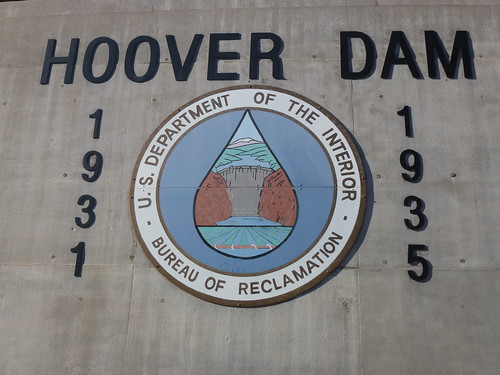 |
| Take note of the years |
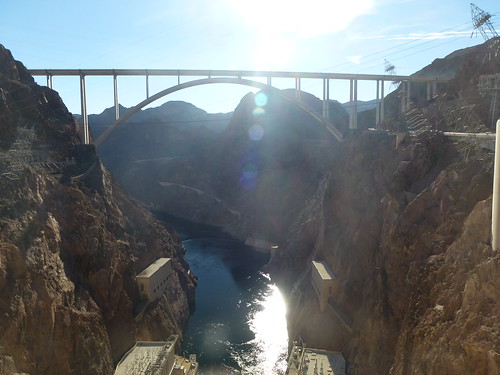 |
| The dam is 726 feet high It is 1244 feet long At the top it is 45 feet thick |
 |
| Look down from the top, and you will gasp just a bit. |
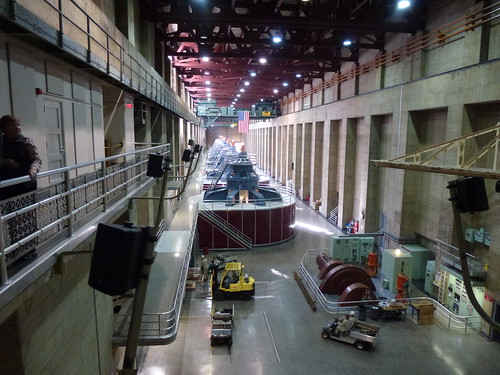 |
| Does this "room" which houses the turbines look small as you watch from above? |
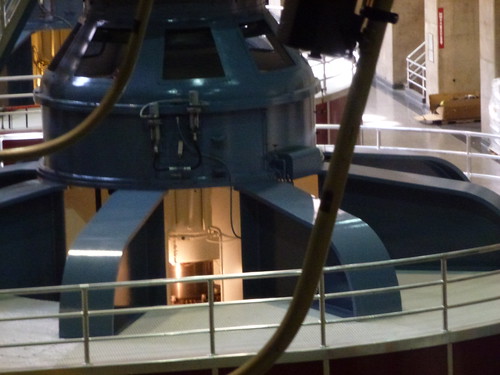 |
| Here is a little bit of a close-up. These are HUGE. |
Imagine the political upheaval. The mighty Colorado
runs through seven western states into Mexico ,
and each state has its own priorities and problems. Within each state are two factions: urban and
rural. Each faction has its own
priorities and problems. Before anything
can be done, the federal government has to improve and furnish funds. There is also the conflict between money
intended solely for the west without consideration of the eastern part of the
country. Political progress is
snail-crawling slow. It takes years before Herbert Hoover, well
before his presidency, can negotiate the Colorado River Compact to make the
dam a possibility.
 |
| Hydroelectric energy sent out to power the states. |
More than 200 engineers helped design the dam that was first
proposed in 1922 and approved through the Boulder Canyon Project Act in 1928. By that time it was Herbert Hoover,
president, who signed the Act into law.
Imagine the workforce problems. The site, Black
Canyon Arizona ,
Nevada border, is in the middle
of a desert. Yet men and their families,
ailing from the early part of the depression, heard about the job possibilities
and ventured lock, stock, and barrel out to the blistering desert where there
was no housing or facilities ready for them, only the hope that there was a
job. Many lived in tents. Some did not
have even that. Work did not begin until
a year after word of the project went out, but the men wanted to work, and they
camped out and suffered until construction commenced in 1930. Sometimes the temperatures rose to a
blistering 130°.
Over 21,000 men worked on the dam, about 5,000 at any given
time, in three shifts a day round the clock.
Men worked seven days a week, fired if they refused. Two days off a year, Christmas and July 4th,
optional and without pay. It is
estimated that 107 men lost their lives on the project which was miraculously
finished in record time. There were
work-related issues, a strike, oftentimes a carelessness toward worker safety
and health, but most issues were cast aside to complete the project.
 |
| After serving its purpose, the water is released on the other side of the dam. |
Imagine this miracle: the Colorado River
was diverted on Nov. 14, 1932
and the last concrete was poured on May
29, 1935 . President Franklin
D. Roosevelt dedicated it (then known as the Boulder Dam) on Sept. 30, 1935 . The time span is a miracle! Just think of public works’ progress in your
area today!
And public works the Hoover Dam was. This was man’s attempt to harness a wild,
untamed river, the Grand Canyon carver—the mighty Colorado
River . Harness its power
and floods plaguing one section might be stopped and allow agriculture to
flourish. Harness its power and the
desert could be watered into cooperation with agriculture and human life.
Had the dam been built by pouring concrete the conventional
way, the concrete would have taken 125 years to cure. New techniques had to be developed.
There are a host of engineering and architectural developments as
by-products of the dam’s construction.
When the gracefully arched dam was finished and the water
poured in to the area beyond, Lake Mead was formed—115
miles long and 500 feet deep. This is in
the middle of the desert!
The Hoover Dam is also beautiful. Its design is futuristic in an art deco
style. In the engine room where 17
turbines generate two billion watts of electricity, the floors are terrazzo
marble in designs reminiscent of Native American patterns. The dam is
magnificent, inside and out. There is even a celestial map marking the exact
position of the stars on the day President Roosevelt dedicated the dam.
 |
| Priceless by today's standards. Impossible to use terrazzo marble today. |
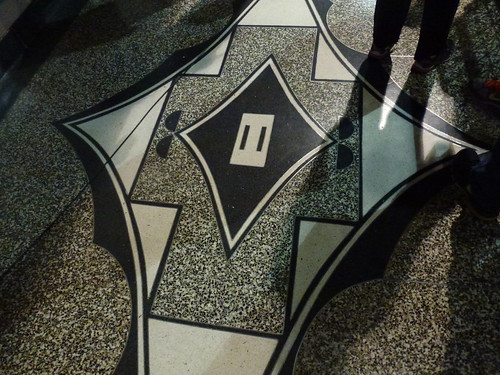 |
| You can also see how huge these designs are. Quite magnificent. |
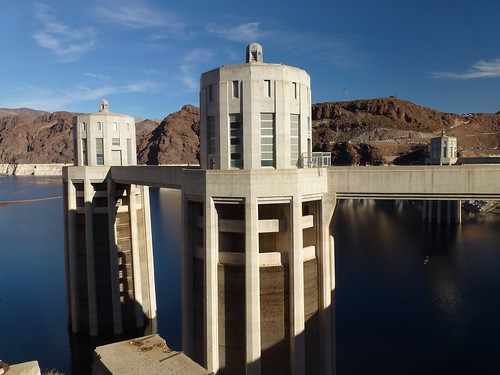 |
| Beautiful |

2 comments:
you are right Hoover Dam is really something to see. we even took the tour.
Worry not, but wanted to tell you at least for here that I enjoyed seeing the Hoover Dam article again, almost a duplicate from when Carol and I made the same visit.
Have a great week, Take good care of each other,
Post a Comment